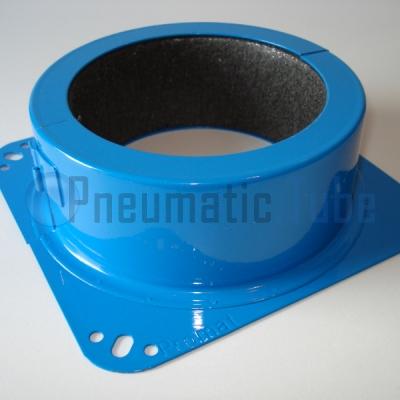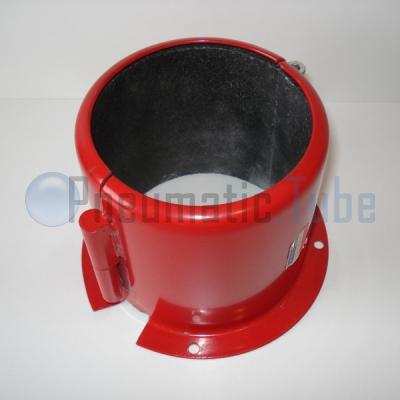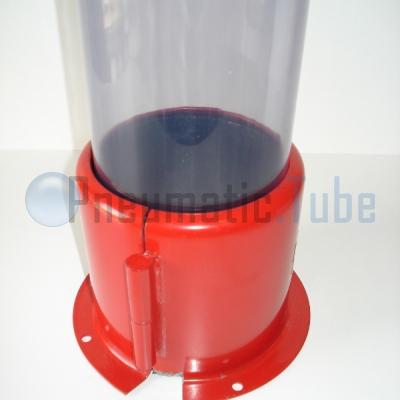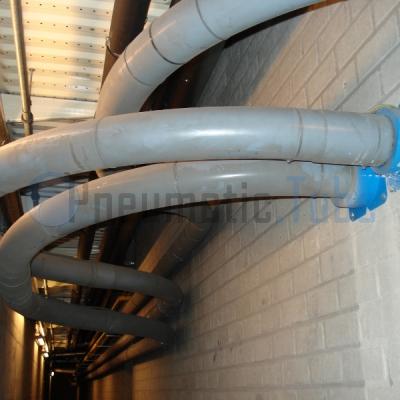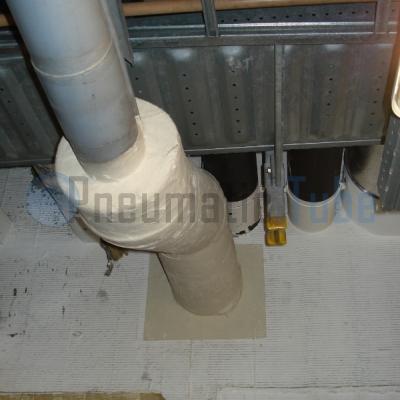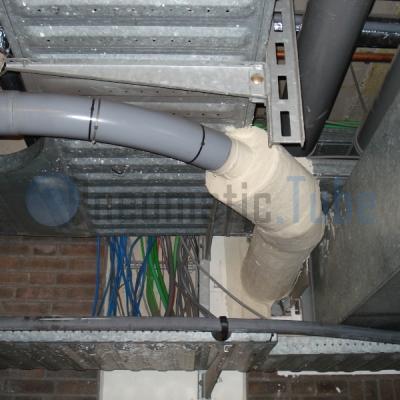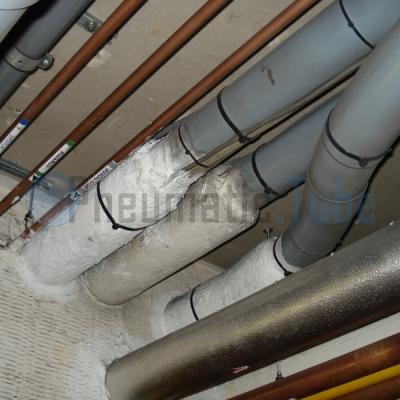Pneumatic Tube Fire collar
The tubes of a pneumatic tube system run by different areas of a building. In the basement, the crawl space, in shafts, in the walls and above ceilings. In order to come from one area to another, there must be a big hole in the wall or floor.
In connection to sound and heat insulation it is recommended that the open space around the tube is filled with insulation. Use preferably no polyurethane foam (PUR). By setting and hardening of the foam the tube will be crushed. It's possible that a carrier can't slide by this narrowing pipe.
If the wall or floor is part of a fire compartmentation (fire separation) then the hole will also have a fire resistant finish. The fire collar is placed around the tube and against the wall. This fire collar comprises a metal enclosure containing a round carbon layer. In a fire situation, the temperature in the room and the tube will rise quickly. At about 115° Celsius the carbon layer will expand and seal the hole in the wall.
This will prevent that flames and toxic (combustible) gases can freely go along the pneumatic tube, into the adjacent room. This is necessary because a very small opening is sufficient, to let not completely burned hot gases through the space between the pipe and the wall to the adjoining room. This allows the adjacent area to also cause fire.
 Pneumatic Tube, Rohrpost, Buizenpost
Pneumatic Tube, Rohrpost, Buizenpost
Pneumatic Tube Fire collar
Published: 27-07-2018
Last updated: 05-01-2019
Show related articles:
Pneumatic Tube Calendar
24 October 1864 (160 years ago)
Commissioning Pneumatic Tube Mail Hamburg, Germany
31 October 1874 (150 years ago)
Pneumatic Tube Mail railway in London, Great Britain out of business
1 October 1879 (146 years ago)
The Mix & Genest company was founded by the businessman Wilhelm Mix and the engineer Werner Genest in Berlin-Schöneberg
7 October 1897 (128 years ago)
Commissioning Pneumatic Tube Mail New York USA
